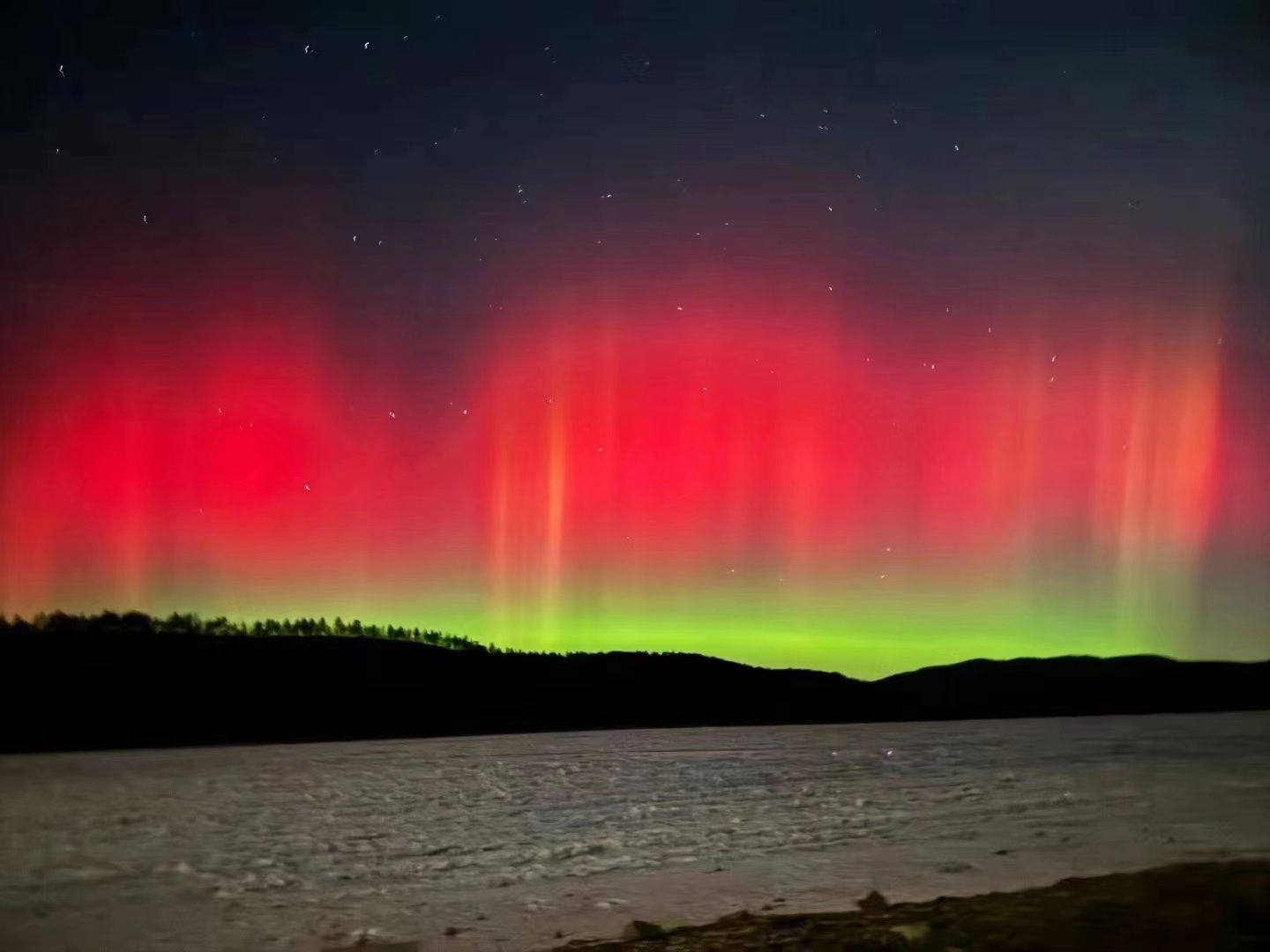Auroras On the Rise: Spectacular Northern Lights Expected to Illuminate Skies Worldwide in 2024
We used to think that we have to pay an arm and a leg and venture to the remote, freezing mountain ranges of Europe in order to behold the captivating aurora borealis, otherwise known as the Northern Lights.
However, recent events suggest we might see this phenomenon much closer to home.
On 1 December 2023, people living in Hokkaido, the outskirts of Beijing, and many cities around the globe were pleasantly surprised to see the night skies lighting up with colourful hues.
Hokkaido, Japan
As reported by The Japan Times, the aurora borealis was visible to the naked eye in Hokkaido on 1 December 2023, and was witnessed from an observatory in Rikubetsu.
This was the first time this celestial phenomena was observed in the city in 20 years.
User @KAGAYA_11949 shared on X (formerly Twitter) shared a beautiful time-lapse video of the lights.
昨日北海道で撮影に成功したオーロラの写真をつなげて動画にしました。
8分あまりの動きが約80倍速で再生されます。
日本からオーロラを見られるチャンスは貴重なので非常にワクワクしながら夢中でシャッターを切りました。 pic.twitter.com/wB4SC4UQE6— KAGAYA (@KAGAYA_11949) December 2, 2023
“The chance to see the aurora from Japan is rare, so I was very excited and eagerly pressed the shutter button,” he wrote in the post.
Mohe, China
Over in the “Arctic Town” of Mohe in northeast China’s Heilongjiang Province, the sky glowed bright purple. As reported by CGTN, the phenomenon was also visible around the outskirts of Beijing, too.


This marks only the second time in history that the aurora borealis was seen, with the previous time being in 2003, according to Global Times.
Auroras also made an appearance in other regions in China, such as in the Inner Mongolian Autonomous Region and in Xinjiang, according to local media.
Beautiful Northern Lights💫 were spotted in multiple locations across #China, including Heilongjiang, Xinjiang, Inner Mongolia, Beijing, & Hebei.
Many photography enthusiasts were fortunate to witness this rare phenomenon. 🌌📷#NorthernLights #RareSighting pic.twitter.com/MRLIcsZY8m— iChongqing (@iChongqing_CIMC) December 4, 2023
More aurora events are forecasted to occur on December 4 by China’s National Satellite Meteorological Centre, as per Global Times.
Cities Across USA
Outside of Asia, cities in the United States, such as Wisconsin and Texas, also experienced this dazzling phenomenon, befuddling experts as these places were “unusually far south” for them to be visible, according to The Washington Post.
The #aurora I’ve been waiting for! The strong CME hit and a G3 magnetic storm occurred.
In the field quick edit from Spooner, Wisconsin. Colors straight off camera. No color correction! Bit dimmer to the eye, But the reds were so bright right into dawn!#wiwx #northernlights pic.twitter.com/h50CqazDAL— Jake Stehli (@eljakeo30) December 1, 2023
Typically, the Northern Lights are visible in places further up north, such as Alaska.
However, Texans have been blessed with repeated sightings of the rare light display, with two other occurrences in March and April 2023.
Why is this Happening?
Before we start speculating about the end of the world, we should understand the science behind the aurora borealis.
According to NASA, Northern Lights are produced when charged particles and energy from the sun, usually from a solar storm or Coronal Mass Ejections (CMEs), enter the Earth’s atmosphere and react with gases to produce the natural, brilliant lights.
In other words, when we see the aurora borealis, we see our Earth’s atmosphere doing its job shielding us from solar emissions.
They are more commonly seen near the North and South Poles because Earth’s magnetic field steers the charged particles towards the poles.
Therefore, when multiple solar events were observed from 27 to 29 November 2023, a lot of energy and charged particles were hurled towards the Earth and arrived in the days that followed.
The combined strength of recent solar activities resulted in seeing Northern Lights in places farther from the poles.
More Aurora Displays to Come Next Year.
The sun’s activity, which follows an approximately 11-year cycle, will peak in 2024, likely between January and October according to experts at the US North Oceanic and Atmospheric Administration (NOAA)
This implies more robust solar storms, leading to increased energy and charged particles directed at Earth.
Don Hampton, a research associate professor at the Geophysical Institute of the University of Alaska Fairbanks, explained to National Geographic that this heightened energy might expand the aurora zone beyond its usual boundaries.
This means there’s a higher chance of seeing auroras further south from the North Pole and vice versa.
As such, 2024 might bring captivating light displays to unexpected places globally, so pack your bags and keep a lookout for any updates if you’re dying to witness one yourself!




